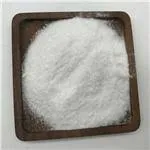Understanding Polyacrylamide Flocculants Characteristics and Applications
Polyacrylamide (PAM) is a water-soluble polymer that has garnered significant attention in various industrial applications due to its flocculating properties. As an effective flocculant, polyacrylamide is widely used in processes that involve the coagulation and sedimentation of suspended particles in water.
What is Polyacrylamide?
Polyacrylamide is synthesized through the polymerization of acrylamide monomers. This synthetic polymer can exist in various forms, including anionic, cationic, and non-ionic types, making it versatile for different applications. The differentiation among these types lies in the ionic charge of the polymer, which significantly influences its performance as a flocculant. Anionic polyacrylamide is effective in situations where negatively charged particles are prevalent, while cationic polyacrylamide works best in systems with positive surface charges.
Mechanism of Action
The efficiency of polyacrylamide as a flocculant is attributed to its ability to bridge and agglomerate fine particles suspended in water. When introduced into a liquid medium, polyacrylamide molecules interact with the suspended particles through charge neutralization and physical entrapment. This interaction enhances the aggregation of particles, leading to the formation of larger flocs that can settle more easily under the influence of gravity. Consequently, this process improves the overall clarity of water and facilitates the removal of impurities.
Applications of Polyacrylamide Flocculants
1. Water Treatment One of the most prominent applications of polyacrylamide flocculants is in municipal and industrial wastewater treatment. PAM is used to clarify water, remove suspended solids, and enhance the efficiency of sedimentation processes. Its ability to improve the settling rate of sludge makes it invaluable in clarifying systems.
polyacrylamide flocculant

2. Mining Industry Polyacrylamide is extensively used in the mining sector, particularly in the extraction of minerals and the treatment of mineral slurries. The flocculant aids in the coagulation of fine particles, which promotes the separation of valuable minerals from gangue materials.
3. Paper and Pulp Industry In the paper manufacturing process, polyacrylamide flocculants are employed to enhance the retention of fibers and fillers, thereby improving paper quality. Additionally, they facilitate the removal of process waters, maximizing the efficiency of the production cycle.
4. Agriculture Polyacrylamide is increasingly utilized in agriculture for soil erosion control and water conservation. It enhances soil structure, reduces erosion, and increases water infiltration and retention, which is particularly beneficial in arid regions.
5. Oil and Gas Industry In oil extraction, polyacrylamide is used to improve the recovery of oil from reservoirs by adjusting the viscosity of the injection water. This enhances oil mobilization, leading to improved yield.
Environmental and Safety Considerations
While polyacrylamide is effective in various applications, it is crucial to consider its environmental impact. The monomer acrylamide is known to be toxic and potentially carcinogenic. Therefore, the use of PAM in applications involving direct contact with drinking water must comply with safety regulations to minimize risk. Research is ongoing to develop PAM alternatives that are less harmful to human health and the environment.
Conclusion
Polyacrylamide flocculants present a robust solution to a multitude of industrial challenges, particularly in water treatment and materials processing. Their ability to efficiently aggregate fine particles enhances the quality of water and optimizes various production processes. However, awareness of their safety and environmental implications remains vital to ensure sustainability in their application. As research advances, we can anticipate improvements in both the effectiveness and safety of polyacrylamide and its derivatives in various industries.

